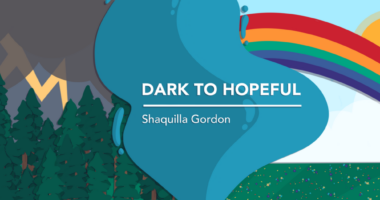How I support other PNH and aplastic anemia patients
Sharing stories, information, and resources can be hugely helpful

Living with rare blood disorders can bring a sense of loneliness. Of the billions of people on Earth, only a handful truly understand what I’m going through. In addition, trying to find a good support team and helpful health information can be daunting and stressful.
With my diagnoses of paroxysmal nocturnal hemoglobinuria (PNH) and aplastic anemia, encountering another person diagnosed with one or both of these conditions feels like Christmas Day. Excitement takes over as we compare stories, learn how we manage our care, and ask questions about hospitals.
I often feel like I have word vomit, racing against the clock to catch up and share years of experience in a short amount of time. I’ve never met another patient who didn’t want to share their own story in turn.
Whenever I meet people with PNH or aplastic anemia, I relish the opportunity to help them in any way I can. Whether we’re discussing the need to get a second opinion from doctors or how to exercise while sick, I can support someone who may be in the same situation I once was.
At the beginning of my journey, I didn’t have much information about my blood disorders. During those desperate times, any resources greatly benefited me. I was like a sponge, absorbing everything. Now I aim to help others by sharing the information that helped me.
The following are topics I commonly discuss with other patients:
Resources: I’m often asked which resources helped me the most. I’m always willing to share so that others can do their research and find more information and support.
Diagnosis story: I’m always intrigued to hear how other patients obtained their diagnosis. While our stories are all unique, I often find similarities. For example, we may have experienced similar symptoms that prompted us to get tested or were seen first by an oncologist because no one in our town specialized in blood disorders.
Treatment options: We often discuss any treatments we’re currently taking and how they work for us, as well as any new therapies on the market.
Symptoms: I always talk about how brain fog and fatigue are my most intense symptoms. I also learn which symptoms affect others.
Sharing my story not only allows me to help others, but it also teaches me a lot and helps me feel less alone. I am helping to build a community, and I’m so thankful for all the people I’ve met on my journey.
If you want to share your story, do it, because you never know who it may help. It’s beautiful to see our rare community lean on one another for support and help.
Note: PNH News is strictly a news and information website about the disease. It does not provide medical advice, diagnosis, or treatment. This content is not intended to be a substitute for professional medical advice, diagnosis, or treatment. Always seek the advice of your physician or other qualified health provider with any questions you may have regarding a medical condition. Never disregard professional medical advice or delay in seeking it because of something you have read on this website. The opinions expressed in this column are not those of PNH News or its parent company, Bionews, and are intended to spark discussion about issues pertaining to paroxysmal nocturnal hemoglobinuria.







Leave a comment
Fill in the required fields to post. Your email address will not be published.